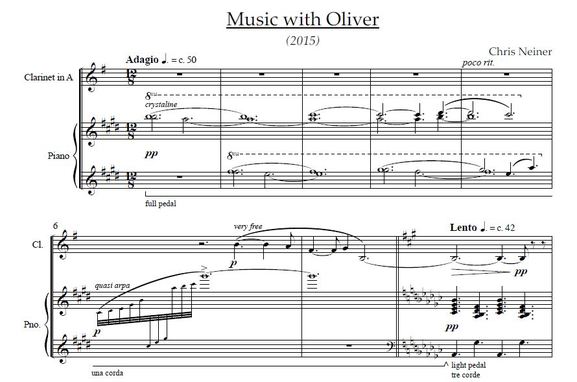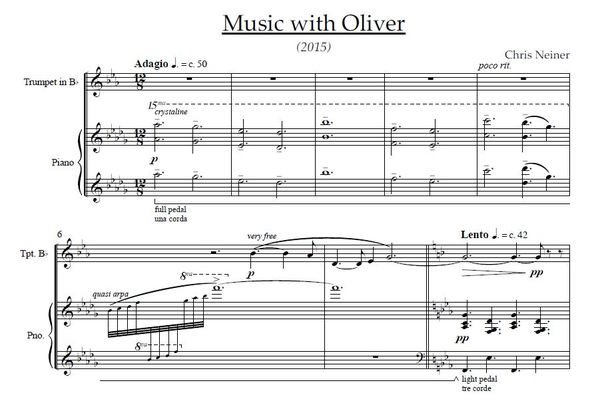|
I’ve recently had the opportunity to arrange Toy Chest and Music with Oliver, but I feel like it would be more accurate to say I have been “recomposing” them. In the process of losing the original ensemble, I gain a new one and likewise lose and gain compositional opportunities: interesting textures, instrumental timbres, extended techniques, etc. For me, the new opportunities must be explored and discovered, yet I cannot forget the purpose and sound of the first version. Balancing new opportunities and original intent is a delicate, frustrating, but rewarding process. Toy Chest: https://soundcloud.com/chris-neiner/toy-chest-2015 When arranging Toy Chest for flute, clarinet, and piano, I struggled to arrange the horn and violin parts for the woodwinds. (I had decided to not alter the piano part.) Often, the horn part was too low for either the flute or the clarinet. Passages utilizing violin pizzicato and muted horn needed equivalent color ideas in the later version. An early solution was to use the bass clarinet, but I quickly abandoned this idea in favor of using the lowest possible note on the typical Bb clarinet. There was never a good place for the clarinetist to switch between instruments and only using bass clarinet seemed like a bad idea. However, I did find the use of the piccolo to be very applicable. Color issues were solved by using slap tongue on the clarinet and pizzicato technique on the flute. Both techniques produce sharp, percussive pops by quickly articulating notes with greater use of the tongue. Opportunity seeking led me to exploit the dexterity of the clarinet with rapid descending scales at a pace not idiomatic for horn or violin. Toy Chest was arranged specifically for my friend Samantha Tartamella. She and her ensemble will premiere the arrangement on April 24 at Bowling Green University Music with Oliver: https://soundcloud.com/chris-neiner/music-with-oliver-ssmf-2015 Musical changes in Music for Oliver are best explained with score excerpts that show the differences quite clearly. Clarinet Version: Trumpet Version: In the trumpet version, the lowered key required me to alter the accompaniment to best match my original intentions of register. Ultimately, this meant creating reinforced octaves at the begging of the score, moving the run in m. 6 upwards, and using less dense chords at the beginning of the Lento section.
For exemplary arrangement models, I look to Ravel’s Le Tombeau de Couperin for piano or chamber orchestra and Jennifer Higdon’s Fanfare Ritmico for orchestra or wind ensemble.
1 Comment
|
Archives
July 2023
|

